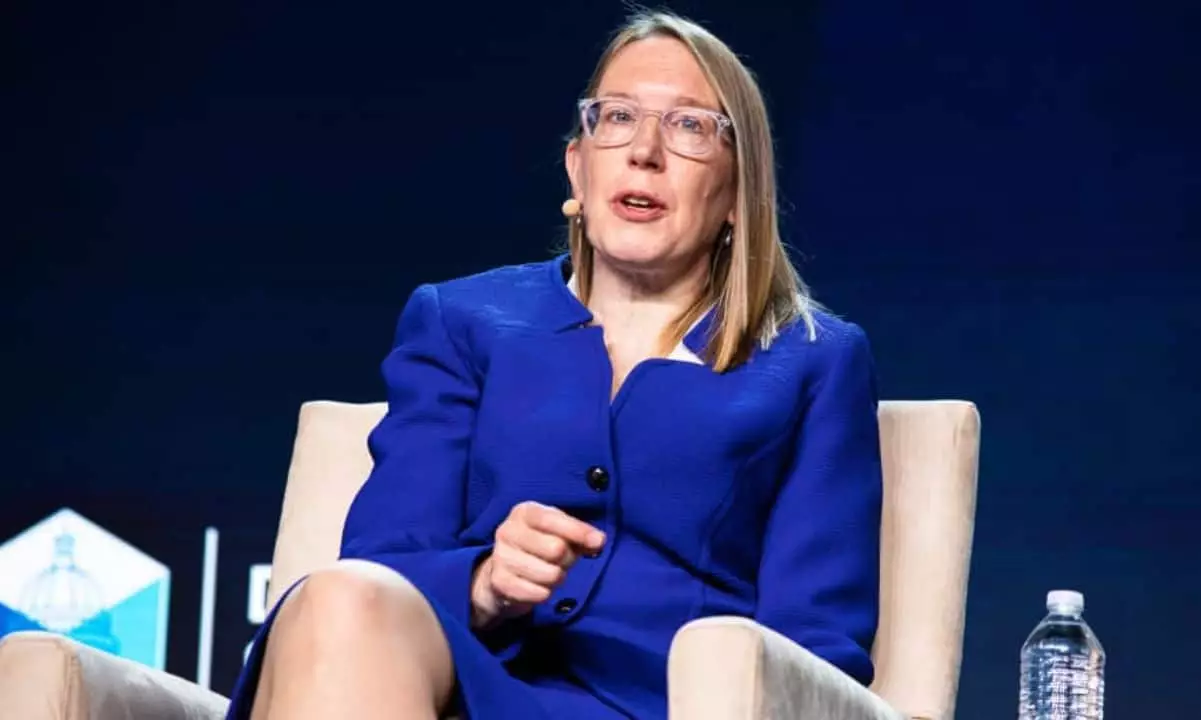The landscape of cryptocurrency is fraught with challenges, particularly when it comes to regulatory clarity and access to financial services. Hester Peirce, a Commissioner at the U.S. Securities and Exchange Commission (SEC), recently shed light on her strategic vision for regulatory developments in the crypto space, especially with the impending administration change with President-elect Donald Trump. In her commentary, Peirce underscored potential pathways forward, emphasizing the need to dismantle barriers that hinder the industry’s growth.
Addressing ‘Operation Chokepoint 2.0’
A significant focus of Peirce’s discussion revolved around the contentious “Operation Chokepoint 2.0.” This initiative has been characterized by critics as an attempt by federal authorities to limit the cryptocurrency sector’s access to traditional financial systems. During her interview on Fox Business, Peirce articulated her strong disapproval of these restrictive measures, calling for their cessation. Specifically, she emphasized the necessity for crypto firms to gain access to vital services, such as custody solutions, which are essential for their operational viability.
Peirce’s call to action reflects broader concerns within the industry regarding government’s role in shaping the financial infrastructure that supports crypto operations. The implications of ‘Operation Chokepoint 2.0’ could potentially stifle innovation and retaliate against an already burgeoning field. By halting these restrictive actions, Peirce believes the SEC can foster an environment conducive to growth and partnership between regulators and the burgeoning digital asset industry.
Another critical aspect of Peirce’s vision involves establishing clearer regulatory frameworks for digital assets. Currently, there exists considerable ambiguity regarding which digital commodities fall under the SEC’s jurisdiction. This uncertainty creates turbulence for companies striving to navigate a compliance landscape that often seems at odds with the innovative spirit of the crypto industry.
During her interview, Peirce stressed the importance of distinguishing between securities and non-securities within the cryptocurrency realm. This determination would significantly impact how different crypto assets are treated under current regulations, ensuring that non-securities are not unfairly burdened by compliance requirements that were originally designed for traditional financial instruments. The clarity Peirce advocates for could provide the necessary guidance not just for crypto firms, but also for regulators themselves, enabling a more straightforward approach to enforcement and strategic planning.
A frequently overlooked yet pivotal aspect of Peirce’s approach is her emphasis on collaboration between regulators and the crypto industry. She envisions an open dialogue that allows stakeholders to contribute to discussions on existing rules, thereby fostering an environment where regulatory reforms can be rooted in real-world applications and entrepreneurial needs. By integrating feedback and insights from crypto businesses, regulators can better understand the nuances of the sector and make informed decisions that reflect its complexities.
This collaborative mindset marks a notable shift from a more traditional top-down regulatory approach. The potential for quick progress, as indicated by Peirce, may serve to expedite the timeline for much-needed reforms. Encouraging involvement from varied industry participants could lead to a more robust and dynamic regulatory framework that can adapt to the rapid pace of technological advancements in the cryptocurrency sphere.
As the discourse surrounding ‘Operation Chokepoint 2.0’ continues, various stakeholders have highlighted the systemic risks emerging from a regulatory stalemate. Crypto exchanges such as Coinbase have raised alarms, submitting evidence through FOIA requests that depict informal regulatory pressures stifling the industry. The suggested narrative is that while there may not be explicit bans in place, the indirect consequences of regulatory guidance have led to a palpable chilling effect on the entrepreneurial spirit that has fueled crypto innovation.
U.S. Representative French Hill’s commitment to investigate these practices substantiates the need for transparency and accountability in how governmental power is wielded over burgeoning industries. Furthermore, industry voices such as Cardano founder Charles Hoskinson emphasize the need for global awareness of these issues. The challenges posed by ‘Operation Chokepoint 2.0’ are not just domestic; they resonate across international borders, potentially influencing how countries navigate their own regulatory frameworks for cryptocurrencies.
As Hester Peirce lays out her vision for the future of cryptocurrency regulation, her call for collaboration, clarity, and the cessation of restrictive practices highlights the critical crossroads the industry faces. The potential for a more inviting regulatory environment could significantly influence the trajectory of the crypto sector, enabling it to flourish in a manner that aligns with its foundational ideals of innovation and accessibility. The path forward remains challenging, yet Peirce’s insights may serve as a beacon for navigating the complexities ahead.

